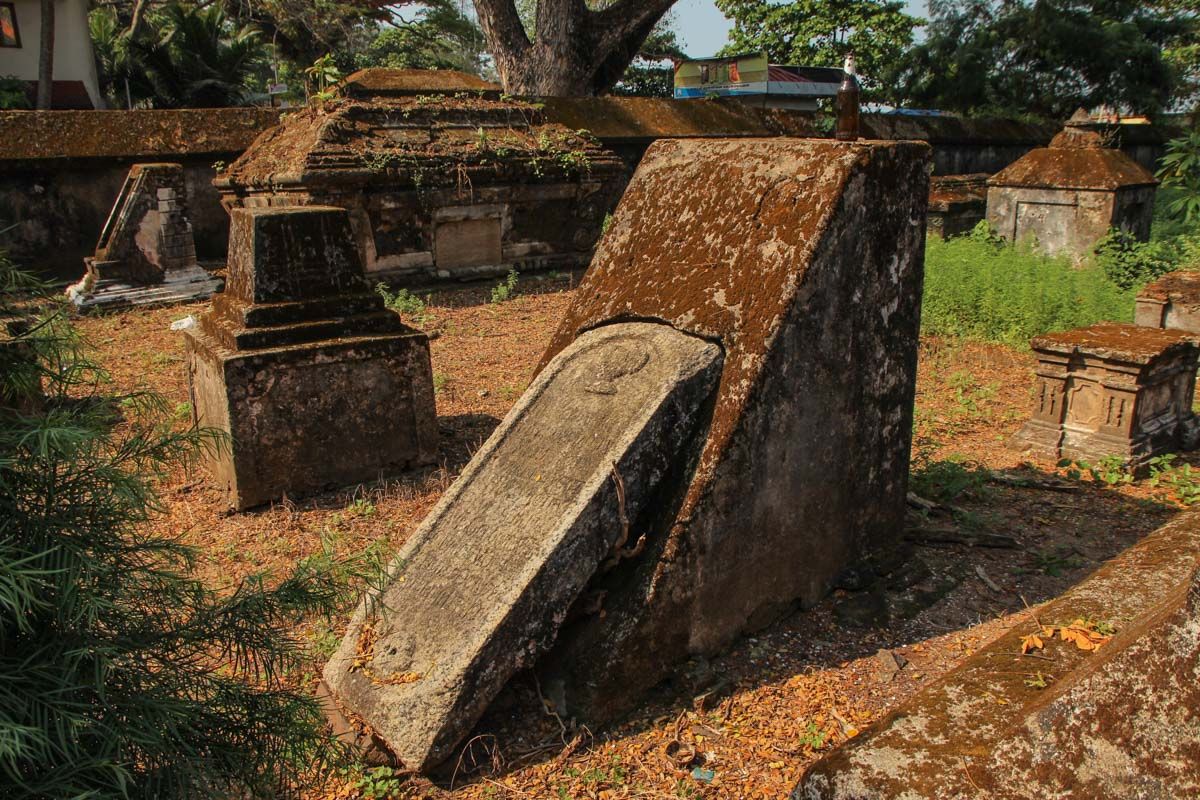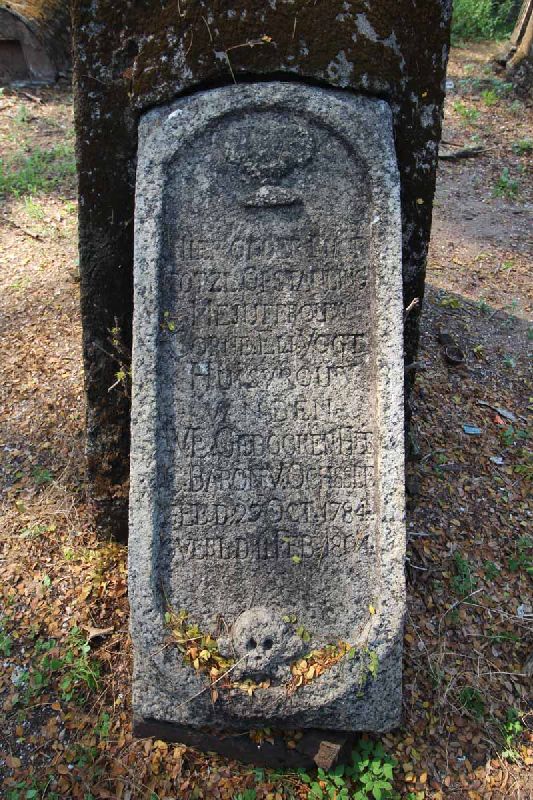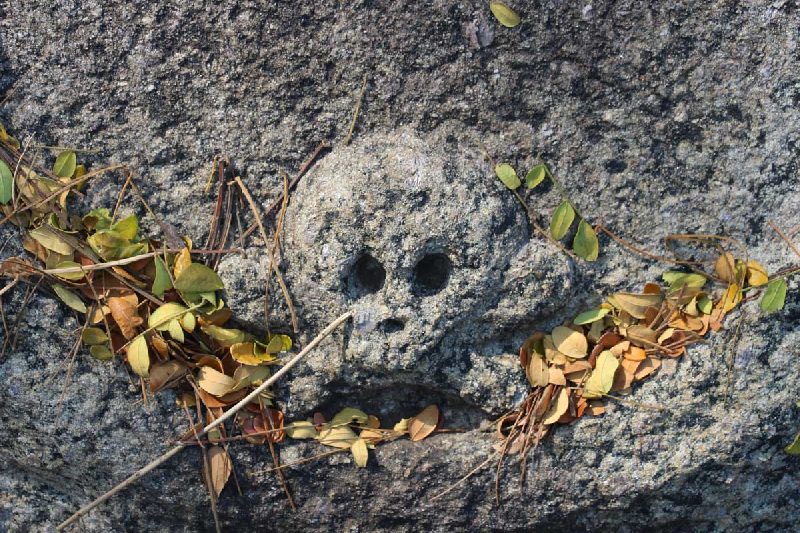
Fort Kochi - Cornelia Elisabeth Vogt (1784-1804)
Cornelia Elisabeth Vogt was born on 29 October 1784 in Kochi as daughter of the ‘vuurwerker’[i] Johan Hendrik Vogt from Nassau in Germany and Augustina Johanna Claassens.[ii] On 7 November she was christened with Johan Gustaaf Claassens and Maria Verhulst as witnesses. She would become the second wife of Carl Philip von Ochsee, from Ixheim in Germany.
The life of Carl von Ochsee
Carl von Ochsee must have been a real survivor. In 1784, the VOC urgently needed reinforcements for the army at the Cape of Good Hope to protect the colony against possible attacks by the British navy. Negotiations were started with Duke Karl Eugen of Württemberg, who would supply a regiment of mercenaries of 1,790 men in 1787. Carl von Ochsee was one of the soldiers of the Württemberg regiment. They had to march on foot, via Paris, to Vlissingen, about 1,000 kilometres. Almost 10 percent of the men deserted or died along the way. On the way to the Cape, another 256 men died of scurvy, among others. Von Ochsee arrived about August 1788 with the Agatha. At the Cape they did not actually have to act and so the remaining approximately 1,250 men were moved in 1791 to places in the East Indies where rebellion had broken out. Von Ochsee was forwarded to Kochi.[iii] [iv]
Von Ochsee must have been at least around thirty when he married Elisabeth Daimichen, who was divorced of Willem van Haaften, on 15 March 1795 in Kochi.[v] Through this marriage he became brother-in-law to Johan Cellarius and Frans von Wrede, both of whom were also of German descent and had an extensive trading network. He also became the stepfather of 12-year-old Maria Elisabeth van Haaften. By the time he rose in rank to major, the English attacked Kochi in the second half of 1795 and forced the Dutch to surrender. In addition, the VOC went bankrupt in 1796. Military ranks would then only offer some protection because of military law. This came in handy every now and then when he got into trouble again because of his short temper.
Carl von Ochsee took advantage of his family ties in trade and his wife's wealth. His mother-in-law had invested her money after her husband's death by lending large sums of money as mortgages or bonds. Part of this had been inherited by his wife Elisabeth. In early 1799, on a verbal agreement, Carl bought three hundred pounds of candles from Constantijn D'Issa who promised to give him a short-term credit for this. When D'Issa wanted a signed receipt, an argument broke out in which Von Ochsee attacked him with an iron bar. Von Ochsee was arrested at his home and thrown into the penal prison where only death row inmates were held. The former other Dutch soldiers were furious that a man with a military status was locked up in a prison with criminals, without first appearing before a court martial. He should have been treated under military law. Von Ochsee was released from prison and placed under house arrest. He made a statement about the incident. D'Issa had come to his door to demand money, despite their agreement. Carl told him that he was unable and did not have time to discuss the matter further because his wife was in labor. D'Issa refused to leave the house, and Von Ochsee was forced to push him out of the house so he could take care of his wife. That night she miscarried. The next morning, while she was fighting for her life, Von Ochsee received a message to report to the civil authorities, to which he replied that, as a soldier, he would follow orders from a military officer. Von Ochsee therefore did not consider it necessary to act immediately, but later that afternoon he was arrested by the civil authorities. He eventually got away with it without significant punishment.[vi]
His wife Elisabeth Daimichen did not survive and died in childbirth on 17 March 1799. Von Ochsee had bricklayer Louis build a tomb for 40 rupia and cut a stone for 50 rupia. The total burial cost was 192 rupia. It is not known whether the funerary monument is still present in the cemetery, but there is a good chance that it is one of the many funerary monuments whose names can no longer be read. Von Ochsee himself, through his wife's inheritance, was a wealthy man with both a house in the city of Kochi and a garden outside the walls of the fortress.[vii] In his late thirties, and despite his temper, Carl must have been a good match when he still had not remarried by the end of 1802. He was therefore on the list of Pieter de Kant as a candidate.[viii]
Cornelia Elisabeth Vogt
In August 1802, Cornelia Elisabeth Vogt found herself in a situation where her stepfather, Pieter de Kant, had to come to her aid. At that time, she was over seventeen years old, half German and in possession of some money. An attractive party for a single man. Lieutenant Pulard from Travancore[ix] had his eye on Cornelia and wanted to marry her. For this, according to Dutch law, she officially needed the signature of her guardian, in this case her stepfather. We only know her side of the story from the correspondence that has survived about it. She is said to have had an errand boy at the door on 4 August 1802, with a letter in English from Lieutenant Pulard. She could not read the letter and had asked the boy what Pulard wrote to her. The boy would have said the letter contained nothing more than the question of whether she wanted to "express that she was fond of him" by putting her name under the letter. He would never show it to anyone and never use it. She saw no harm in this and signed. She later understood that she had signed a marriage promise, but as her stepfather argued, she had no intention of marrying Pulard. In any case, De Kant had no intention of giving her permission for such a marriage; he had much better names on his list. The fact that Dutch law was no longer decisive is evident from the fact that Pieter de Kant had to pay a fine of 500 rupiah for a broken marriage promise. The love for his stepdaughter did not go that far either. They had to go and get the money from the orphanage where her inheritance was managed. Whether it was really all that innocent remains the question. In the correspondence also appears a scrap written by Pulard to the much-esteemed young lady "please draw this in ink. Do not be afraid, they cannot hurt you, if you do this everything will go well".

Pieter de Kant must have been quite upset about this affair and wanted to make haste to arrange a marriage that suited him better. Together with Nicolaas Bisschop, Cornelia's uncle, a marriage was arranged with Carl Philip von Ochsee, twice her age. The marriage took place in April 1803 in Kochi. Cornelia was pregnant almost immediately. "Carl Joseph Nicolaas baron von Ochsee was born on the 14th of January 1804 and baptized 29th January 1804 by the Roman Father with foreknowledge of the clergyman P. Cornelisz. Present at the baptism were the father Carl Baron Ochsee and his beloved. The witnesses are Major de Can(t) and Ms. Bishop.”[x] Not long after, on 11 February Cornelia died. Later that year, Von Ochsee deposited an amount of 5,800 rupia as a maternal inheritance for his son into the orphanage's treasury.
Cornelia was buried in the cemetery in Kochi. Her grave monument consists of a pedestal and a text plate, but the question is whether the two actually belong together. On the text plate a text with below it the symbol of a skull with bones. A common symbol for funerary monuments at the time. The text: Hier onder ligt / tot de opstanding / mejuffrouw / Cornelia Elisabeth Vogt / Huisvrouw / van den / Wel Gebooren /Baron von Ochsee / Geboren den 29 Oct. 1784 / Overld 11 Feby 1804. In translation: Beneath here lies / waiting to be resurrected / miss Cornelia Vogt / housewife /of the / well-born / Baron of Ochsee / Born on 29 Oct. 1784 / Died on 11 Feb. 1804.

In the meantime, all attempts to repatriate the VOC men who stayed on the coast of Malabar and who wanted to return to the Netherlands after the bankruptcy of the VOC had come to naught. Finally, in December 1807, a ship, the Coromandel, was arranged to take the people from Kochi to Colombo. Only fourteen former VOC men and their families went on board with the intention of going to Batavia. One of them was one of the very few living soldiers of the Württemberg regiment; Carl von Ochsee and his son.[xi]
Van Ochsee married again on 13 May 1815 in Colombo, St. Peter's Garrison Church. Isabella Cornelia van Dort, born in Colombo on 25 December 1784 and daughter of Adriaan and Justina Cornelia Visser, would become his third wife. Von Oschsee died 6 November 1820 on Meester Cornelis, nowadays a district of Jakarta. Isabella died a few years later in Surabaya, on 6 July 1823. [xii]
Notes
[i] [Ed] Either blacksmith or gunner/konstabel
[ii] Johan Hendrik VOOGT, of Nassau Weilburg , extraordinair vuurwerker FL 30,00 per month. Came with the Vrouwe Geertruijda in 1759 as soldier fl 9,00 chamber Amsterdam (NL-HaNA_1.04.02_12503 scan 0028, Soldijboek 1.04.02.6375 scan 622 of N. Schooten). In 1759 and 1760 on Batavia, from 1761 until 9-12-1767 in Colombo, after which for 2 months on the Noord-Beverland and form early 1768 in Kochi. Date out of service 31 August 1792. Johan Hendrik and Augustina married 29 September 1782. He was widower of Dorothea Maria van der Weijden with whom he had Maria Margaretha (1775), Jacobus Johannes (1779), Johannes Nicolaas (1790) and Johan Arnold (before 1775).
[iii] NA 1.04.02.10648 scan 570
[iv] https://safrika.org/Wuerttemberg_en.html
[v] NA 1.11.06.111323 scan 0154 en 0175 On 17 July 1793, it was announced that Willem van Haaften and Elisabeth Daimichen had dissolved and annulled their marriage so that Elisabeth could marry. Willem van Haaften had contracted the “sad and incurable disease of leprosy”. Willem van Haaften van Den Briel arrived in 1768 as a sergeant with the Silver Lion of the Rotterdam chamber. NA 1.04.02.12502 scan 5.
[vi] Singh, A.: Fort Cochin in Kerala 1750-1830: the social condition of a Dutch community in an Indian milieu (2007)
[vii] NA 1.11.06.11.1505
[viii] Augusta Johanna Claassens remarried 9 November 1794 Pieter Josef de Can (Kant) van Brussel. wed. RC. Pieter Joseph de Kant from Brussels December 1771 left with 't huijs in Krooswijk van Rotterdam for soldier. From September 1773 on Kochi. Last entry 31 August 1789. In 1776 corporal fl 16.00 NA 1.04.02.12503 scan 10
[ix] Doop en trouwboek Cochin, Gens Nostra 1992. NA 1.11.06.11.850 scan 242 A Jan Pulardt, glazier, sailed for the Amsterdam chamber in 1769 for soldier and his wife Maria Catharina Huising make will 9 January 1795 Kochi. They have a son Andries Albertus lieutenant in the service of his highness the king of Travancore.
[x] NA 1.11.06.11.1564
[xi] Algemeen Handelsblad 22 mei 1852: Charles Joseph Nicolaas von Ochssee born Cochin 14 and baptised 29 Jan. 1804 (son of Karl Philip Bernhard von Ochssee and Cornelia Elizabeth Vogt), infantery officer O.I.L. 1821 last captain 1832 - 1839 (retired), Salt warehousekeeper in Palembang 1839 – 1847 and 1848 - †, auditor military. 1840 -1847 and 1848-1850, 36 died Palembang 20 febr. 1852 (drowned). Married 1st Charlotta Louisa Muller, died Palembang 18 Nov. 1839, 2nd Benkoelen 7 juli 1841 Otilia Wilhelmina Henrietta van Lijnden van Bitterswijk. Baptised Colombo 2 Aug. 1801, died Soerabaja 17 Aug. 1855, daughter of Stephen van Lijnden and Henrietta Magdalena Leembruggen and wid. of Mattheus Petrus Raket. From the first marriage children. From the second marriage a daughter, died young.
[xii] De Indische Navorscher 5 pag. 150-151
- Last updated on .


